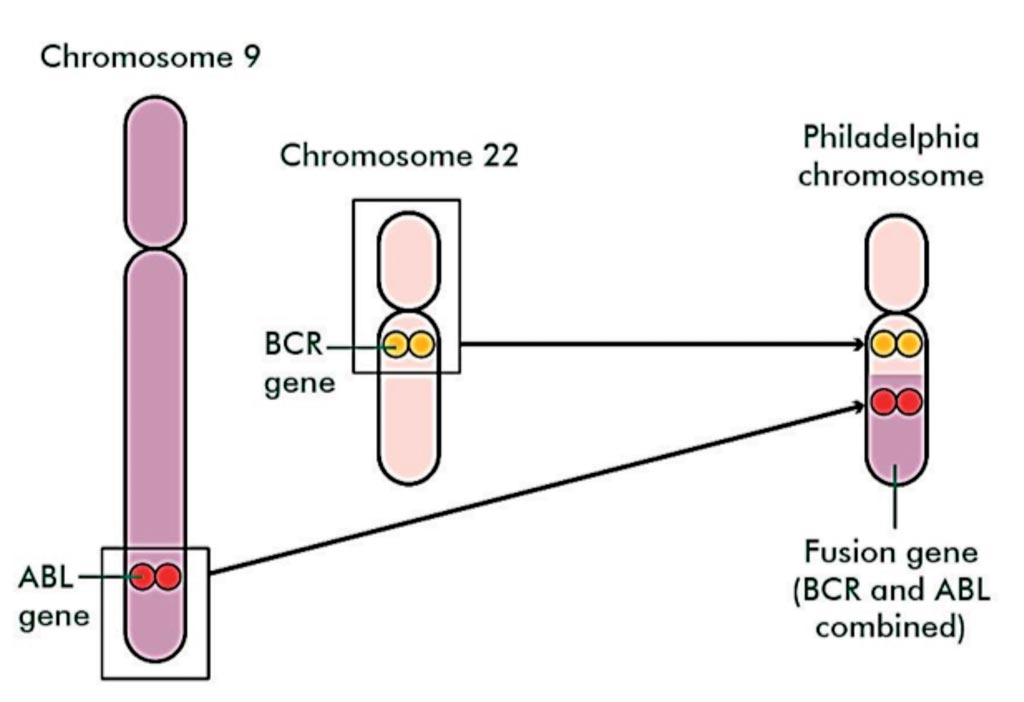Digital PCR Test Monitors CML Therapy Response
By LabMedica International staff writers
Posted on 28 Dec 2017
Chronic myeloid leukemia, or CML, is characterized by the "Philadelphia chromosome," a translocation of chromosomes 9 and 22 that results in the breakpoint cluster region protein- Abelson murine leukemia viral oncogene homolog 1(BCR-ABL) gene fusion.Posted on 28 Dec 2017
Tyrosine kinase inhibitors can target BCR-ABL kinase activity and can transform CML into a manageable chronic disease for many patients. The first CE-IVD digital polymerase chain reaction PCR test has been launched that can monitor the molecular response of patients with CML to therapy, and it does so more precisely and reliably than other available technologies.

Image: On the left side of the diagram, the ABL gene from Chromosome 9 and the BCR gene from Chromosome 22 are combined together to make the ‘Philadelphia chromosome’. This chromosome has a small part at the top and a longer part of the bottom. The bottom part is labelled as a fusion gene, which is BCR and ABL combined (Photo courtesy of Macmillan Cancer Support).
The QXDx BCR-ABL %IS Kit provides an absolute measure of BCR-ABL transcripts with high reproducibility, precision, and sensitivity because it uses Bio-Rad's Droplet Digital PCR (ddPCR) technology. The kit is able to detect deep molecular response (MR) values of 4.7 or 5.0 in 2- or 4-well formats, which exceeds typical limitations of reverse transcription quantitative PCR (RT-qPCR)-based tests that are reliable only down to MR 4.5. Its high sensitivity permits disease remission to be assessed more confidently, so can better aid clinicians in disease management decisions.
Additional benefits of the QXDx BCR-ABL %IS Kit include: reproducible results as absolute quantitation eliminates the need for standard curves and minimizes variation between samples; scalable throughput with test from eight to 48 samples per run to meet any clinical laboratory's throughput needs; high specificity that detect abnormal transcripts that encode for p210 hybrid BCR-ABL protein associated with CML, but not p190, which is associated with acute lymphoblastic leukemia.
Niels Pallisgaard, MSc, the chief molecular biologist at Zealand University Hospital (Roskilde, Denmark) said, “Bio-Rad's ddPCR system is a powerful solution for monitoring patients treated for CML. The increased sensitivity, precision, and reproducibility of BCR-ABL measurements without the need for standard curves, as in traditional RT-qPCR methods, lends to the rationale for the use of ddPCR in routine laboratory testing.”
Related Links:
Zealand University Hospital









 assay.jpg)




